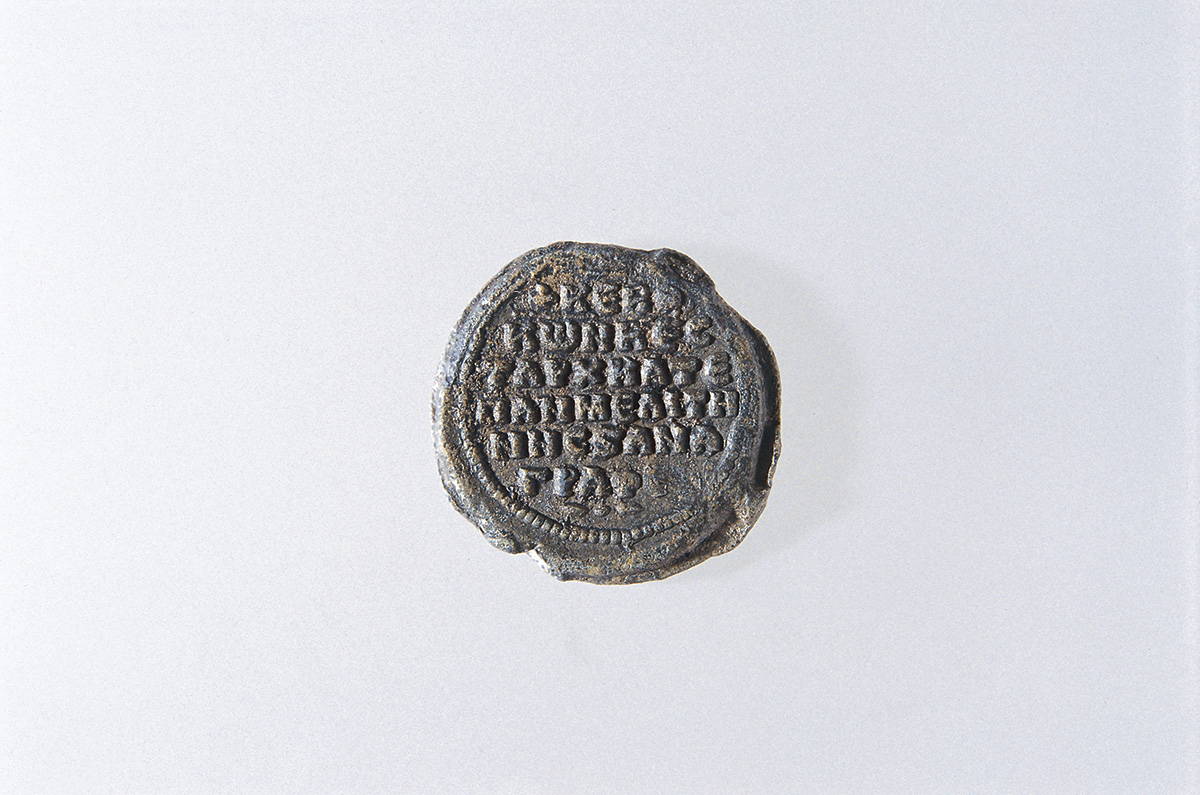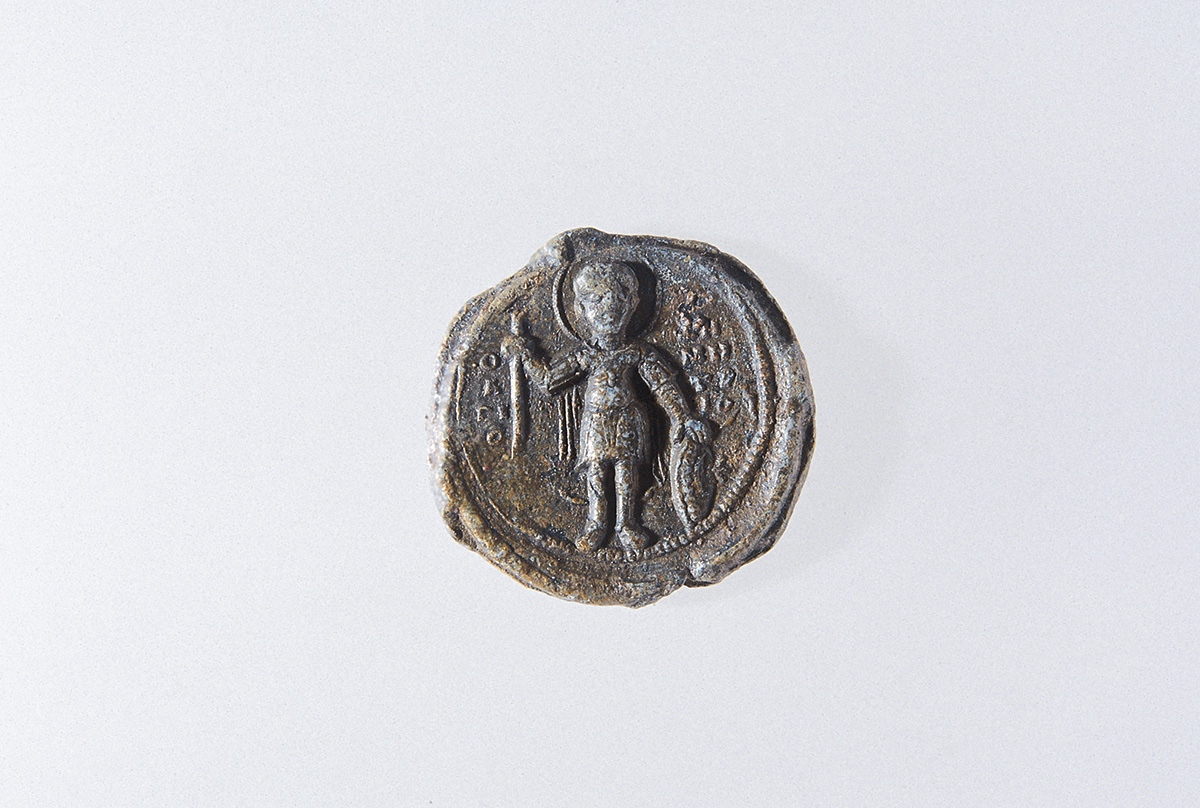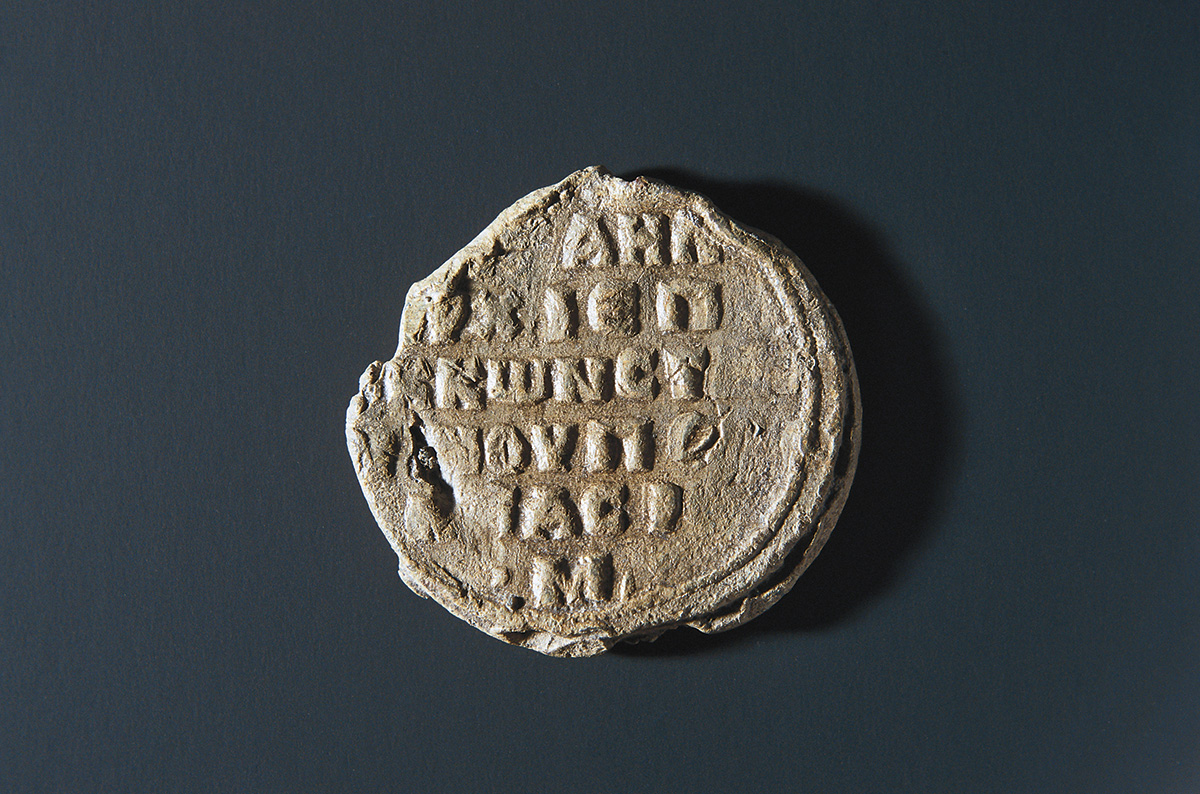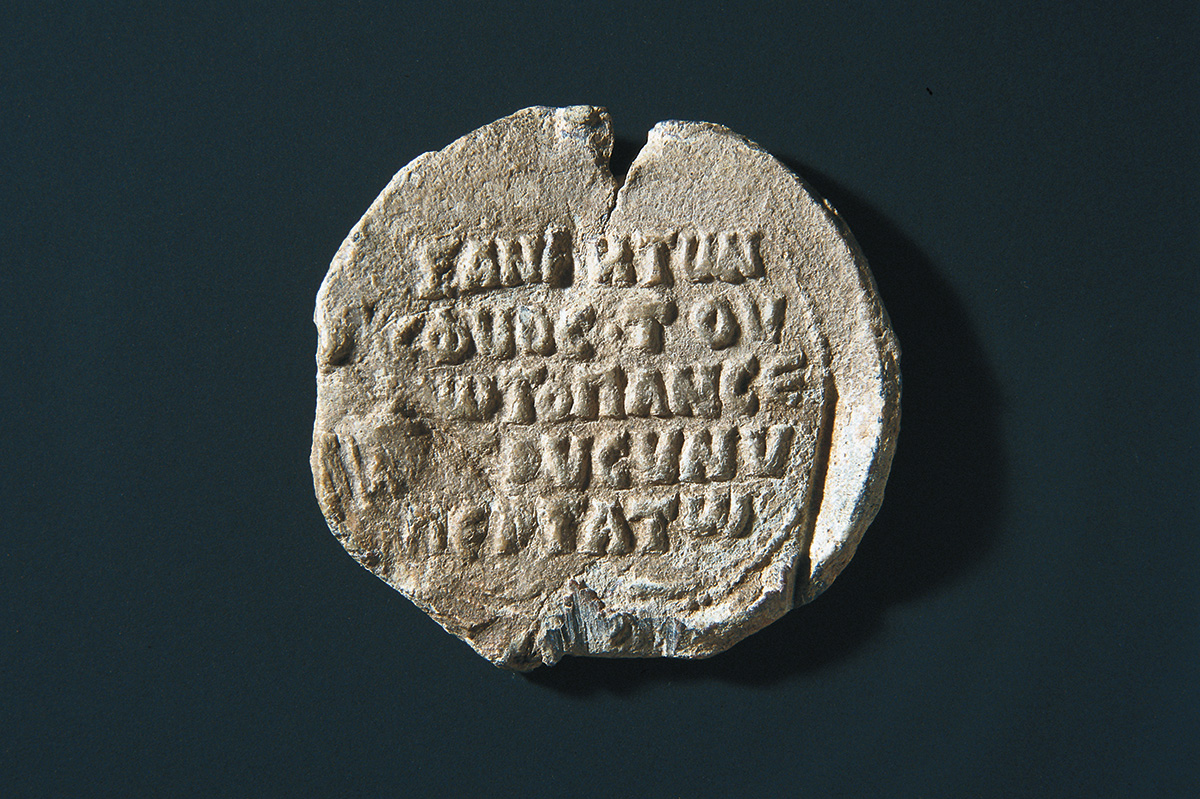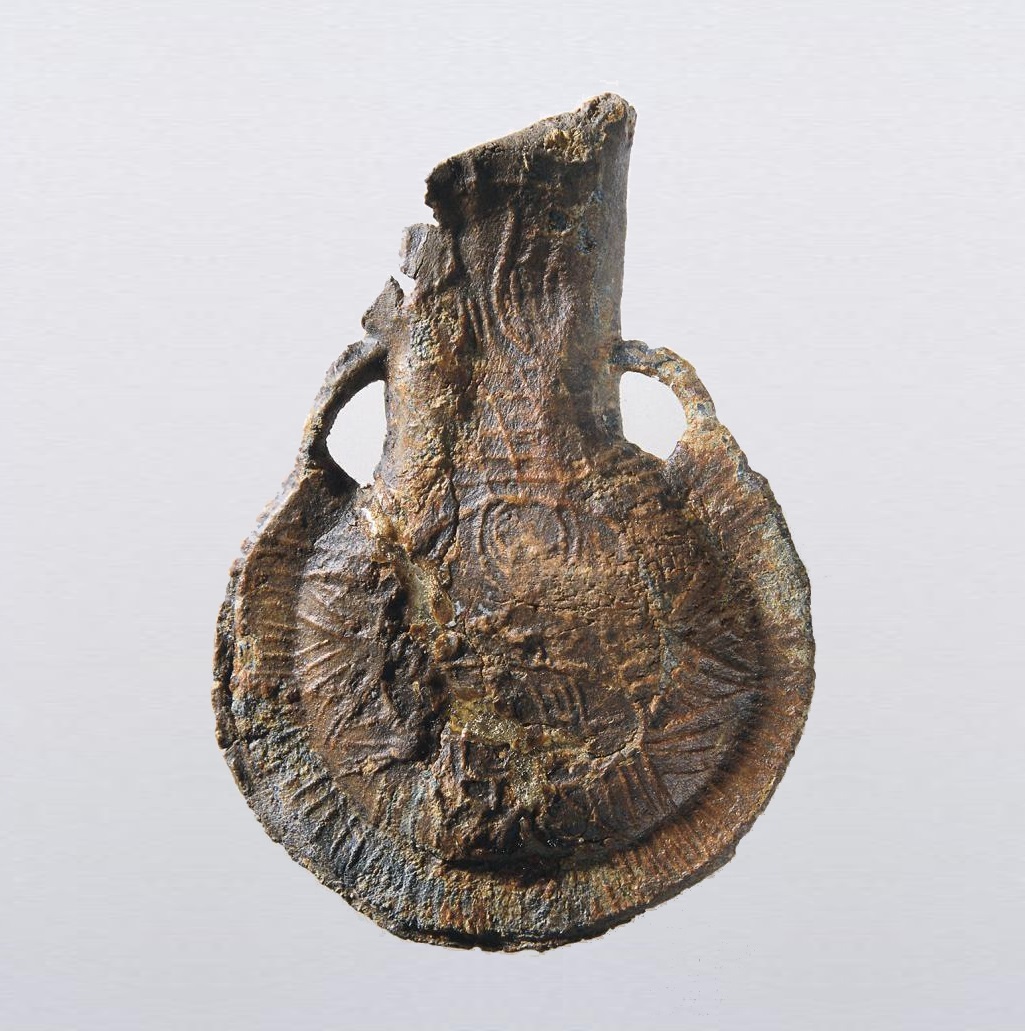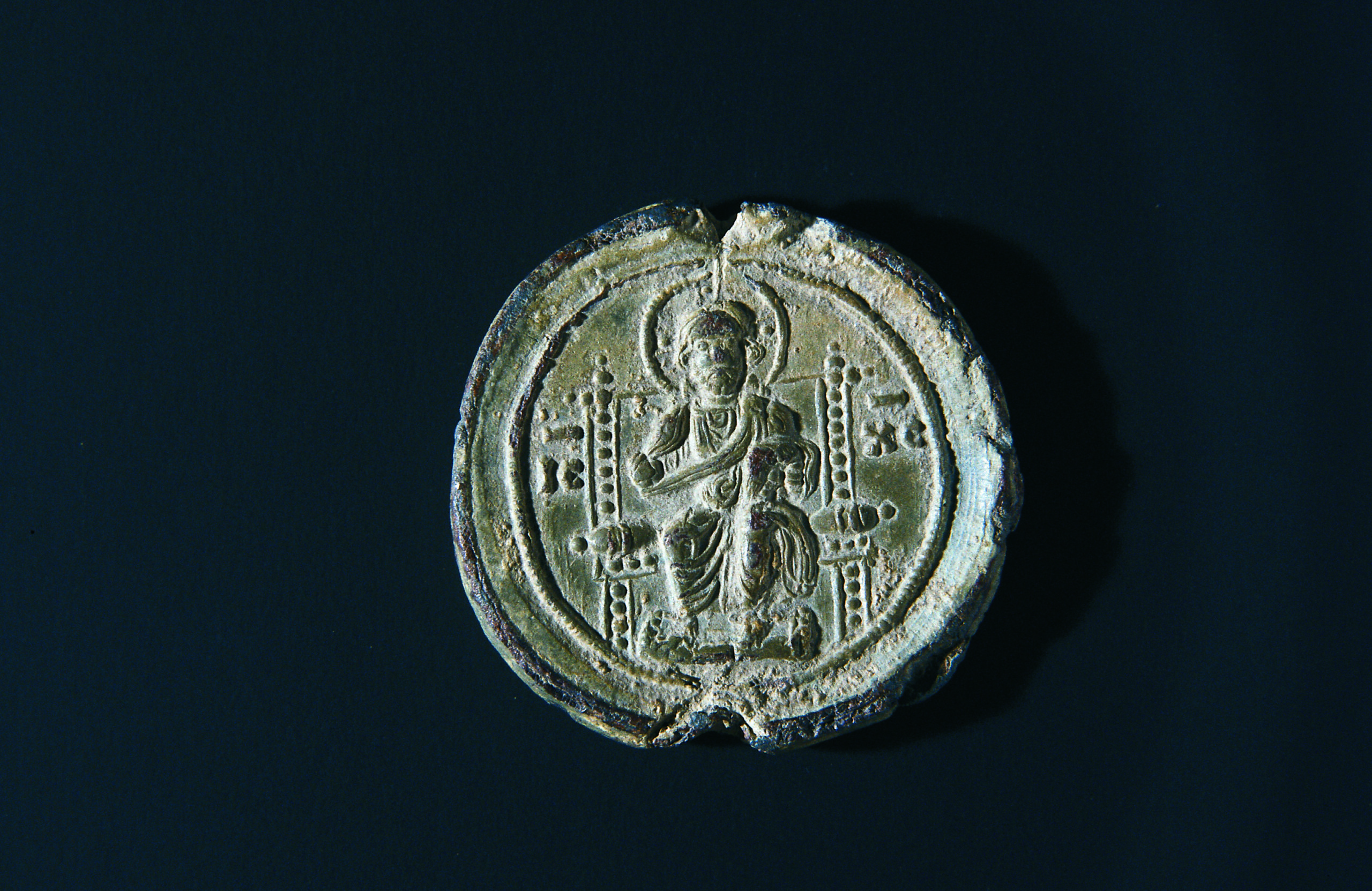Lead seal of Constantine, vestarchi, katepano of Melitini and anagraphea (11th c.)
On the one side within dotted circle is a portrayal of Saint Demetrios standing, frontal, wearing military attire, holding a spear and a shield. To the left and right, the inscription reads “Saint Demetrios”. On the back side, an inscription written in six rows reads “Lord, help Constantine vestarchi, katepano of Melitini and anagraphea”. It is a skillful made seal of a high quality that refers to the governor of the city of Melitini in eastern Cappadocia that was conquered in 757 a.D. by the Arabs, but in 934 a.D. it was conquered by the Byzantines. Under Byzantine rule, the city became the capital of an important theme with an important public fund. For this reason, the Byzantine governor of the city had a strong military and political rank. He was also a katepano, vestarchis and anagrapheas. “Katepano” was an administrator of the military body, while by the end of the 10th century meant the governor of large provinces. “Vestarchis” was a title of high military rank, which appears in 10th c. and stops to exist by 12th c. The title of “vestarchis” was also used to mean a judical rank. “Anagrapheas” was an officer of economic affairs, responsible for the control of the land registry and the payments of the land owners to the state.
Code
ΒΜΟ 39
Type
Lead seal
Chronology
11th c.
Dimensions
Diameter 3 cm., weight 18,48 g.
Material of Construction
Lead
Origin
Zacos collection, bought at an auction



